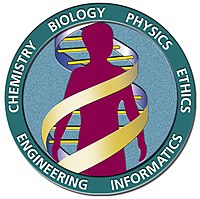
Photo from wikipedia
Abstract Next-generation sequencing technologies have revolutionized genomics and altered the scientific publication landscape. Life-science journals abound with genome papers—peer-reviewed descriptions of newly sequenced chromosomes. Although they once filled the pages… Click to show full abstract
Abstract Next-generation sequencing technologies have revolutionized genomics and altered the scientific publication landscape. Life-science journals abound with genome papers—peer-reviewed descriptions of newly sequenced chromosomes. Although they once filled the pages of Nature and Science, genome papers are now mostly relegated to journals with low-impact factors. Some have forecast the death of the genome paper and argued that they are using up valuable resources and not advancing science. However, the publication rate of genome papers is on the rise. This increase is largely because some journals have created a new category of manuscript called genome reports, which are short, fast-tracked papers describing a chromosome sequence(s), its GenBank accession number and little else. In 2015, for example, more than 2000 genome reports were published, and 2016 is poised to bring even more. Here, I highlight the growing popularity of genome reports and discuss their merits, drawbacks and impact on science and the academic publication infrastructure. Genome reports can be excellent assets for the research community, but they are also being used as quick and easy routes to a publication, and in some instances they are not peer reviewed. One of the best arguments for genome reports is that they are a citable, user-generated genomic resource providing essential methodological and biological information, which may not be present in the sequence database. But they are expensive and time-consuming avenues for achieving such a goal.
Journal Title: Briefings in Functional Genomics
Year Published: 2017
Link to full text (if available)
Share on Social Media: Sign Up to like & get
recommendations!